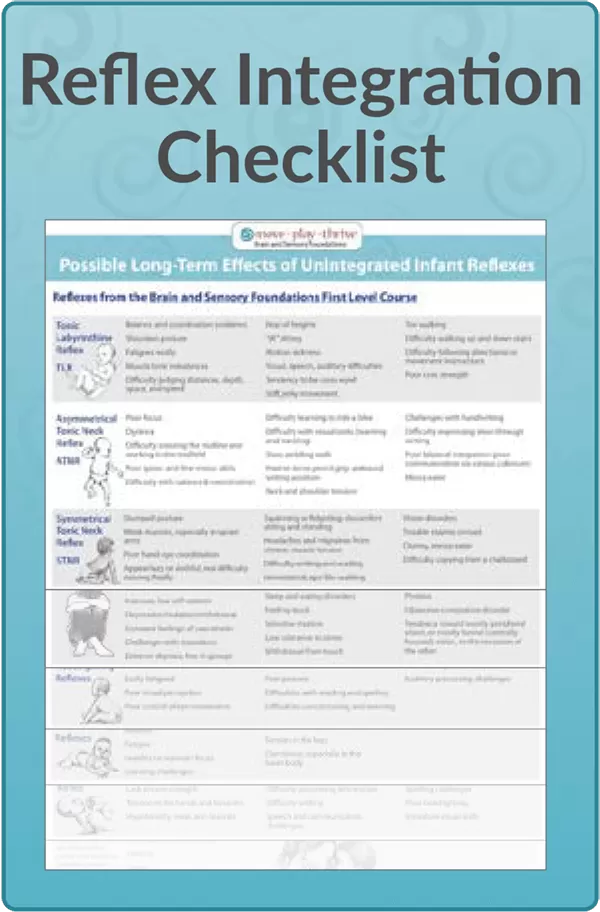Birth and Bonding
 Bonding is the process of creating a secure parent-child attachment. It is a complex set of intertwined parent-child behaviors that are dependent on and greatly supported by several primitive reflexes, such as the Facial-Oral reflexes.
Bonding is the process of creating a secure parent-child attachment. It is a complex set of intertwined parent-child behaviors that are dependent on and greatly supported by several primitive reflexes, such as the Facial-Oral reflexes.
Bonding begins in the womb as the parents relate to their baby on an emotional level. The moments just after birth through the first months of life are a critical time for establishment of bonding. While both parents ideally engage in the bonding process, mother-child bonding is of primary importance because mothers are intimately connected with their babies during pregnancy and via breastfeeding. The process of bonding with a baby is natural and instinctual for most mothers, and as long as there is no interference, mothers will hold their babies against their bodies, rock them gently, strive for eye contact, sing or talk to their baby, and nurse them. Full-term, healthy babies also automatically initiate actions that cue the mother to respond in a caring way, including: crying, smiling, searching for the breast, and seeking eye contact.
When the mother or primary caregiver consistently responds to an infant’s signals and needs, a trusting relationship and lifelong attachment develops. This sets the foundation for the child to enter healthy relationships with other people, and to appropriately express the full range of emotions. Proper bonding is vital for establishing feelings of well-being across the lifespan, as it provides the infant with a baseline sense of safety and being nurtured.
It is a false idea that an attached, responsive parent can “spoil” their baby if that baby is comforted too often. Babies who are reliably held and comforted when they cry grow up to be more secure and confident toddlers and children than those who are not.
When bonding is disrupted, the individual may experience: mistrust, unworthiness, anxiety, anger, and longing. These painful emotions often persist through childhood into adulthood unless emotional healing or reinstated bonding are enacted.
Common Factors Associated with Disrupted Bonding and Development include:
- Premature birth
- Medication of the mother or the baby
- Exposure to toxins, ultrasounds, or electromagnetic radiation
- Vaccine injury
- Illness, trauma, injury, or stress
- Immediate clamping and/or cutting of the umbilical cord after birth
- Separation of the mother and baby
- Challenges with breastfeeding
Weighing, measuring, and bathing newborns before giving them to their mothers for the first time can have a detrimental effect on breastfeeding, and therefore bonding. It is recommended that, whenever possible, newborns be set on the mother’s belly immediately after birth.
- Amphibian Reflex
- Asymmetrical Tonic Neck Reflex
- Birth and Bonding
- Crawling Reflexes
- Crossed Extensor Reflex
- Facial-Oral Reflexes
- Fear Paralysis Reflex
- Feet Reflexes—Plantar & Babkinski
- Foot Tendon Guard
- Hand Reflexes—Grasp, Palmar, and Babkin
- Headrighting Reflexes
- Infant Torticollis
- Landau Reflex
- Moro Reflex
- Parachute Reflex
- Pull-to-Sit Reflex
- Spinal Galant Reflex
- Spinal Perez Reflex
- Symmetrical Tonic Neck Reflex
- Tonic Labyrinthine Reflex
Sources
Dempsey, M. (2015). Face the fear: RMT and fear paralysis reflex, facial reflexes, language and bonding. [Training manual].
Righard, L., & Alade, M. (1990). Effect of delivery room routines on success of first breast-feed. The Lancet, 336(8723), 1105-1107.
Steinfeld, M. B. (n.d.). UC Davis Medical Center Checkup on Health—The importance of infant bonding: Bonding is essential for normal infant development. Retrieved September 5, 2022, from https://health.ucdavis.edu/medicalcenter/healthtips/20100114_infant-bonding.html


